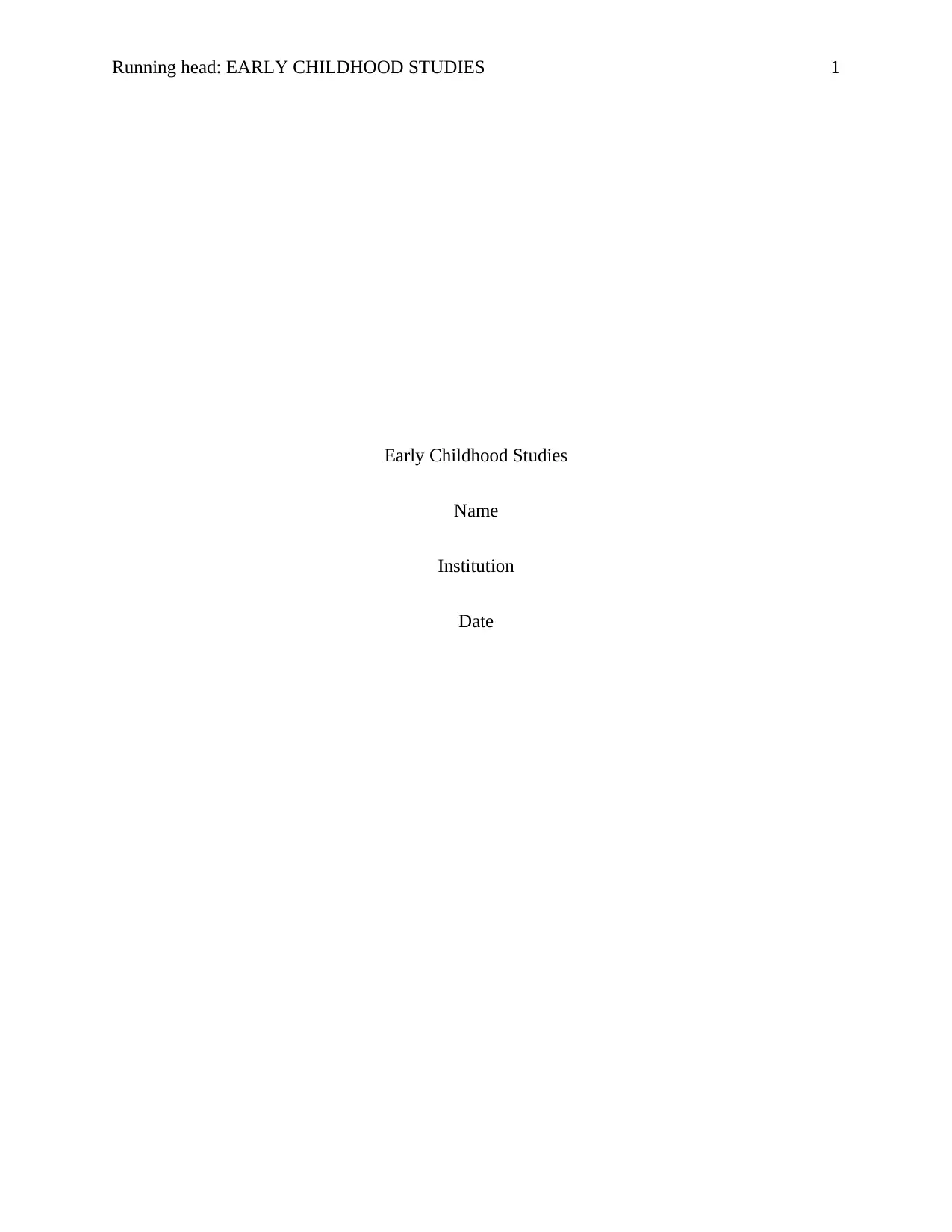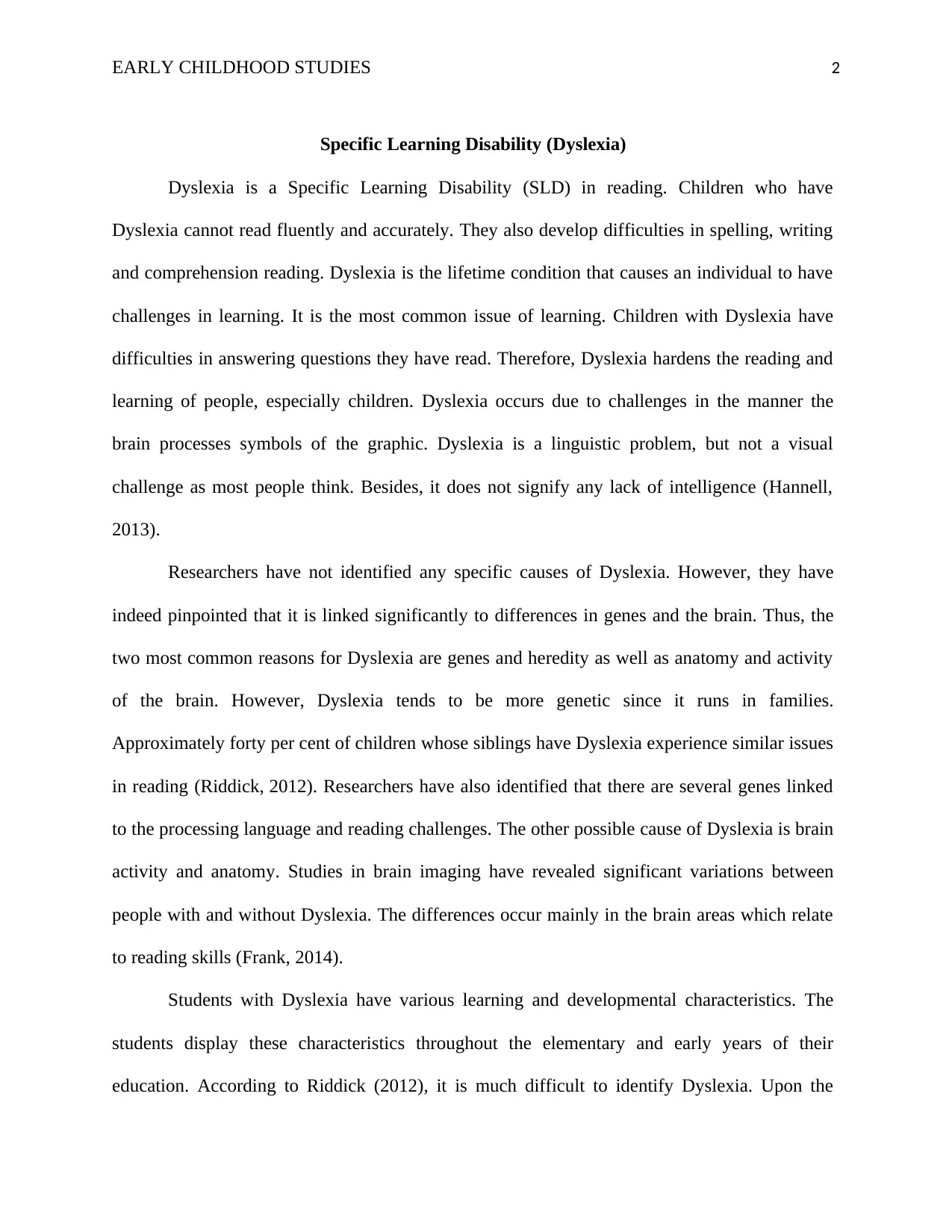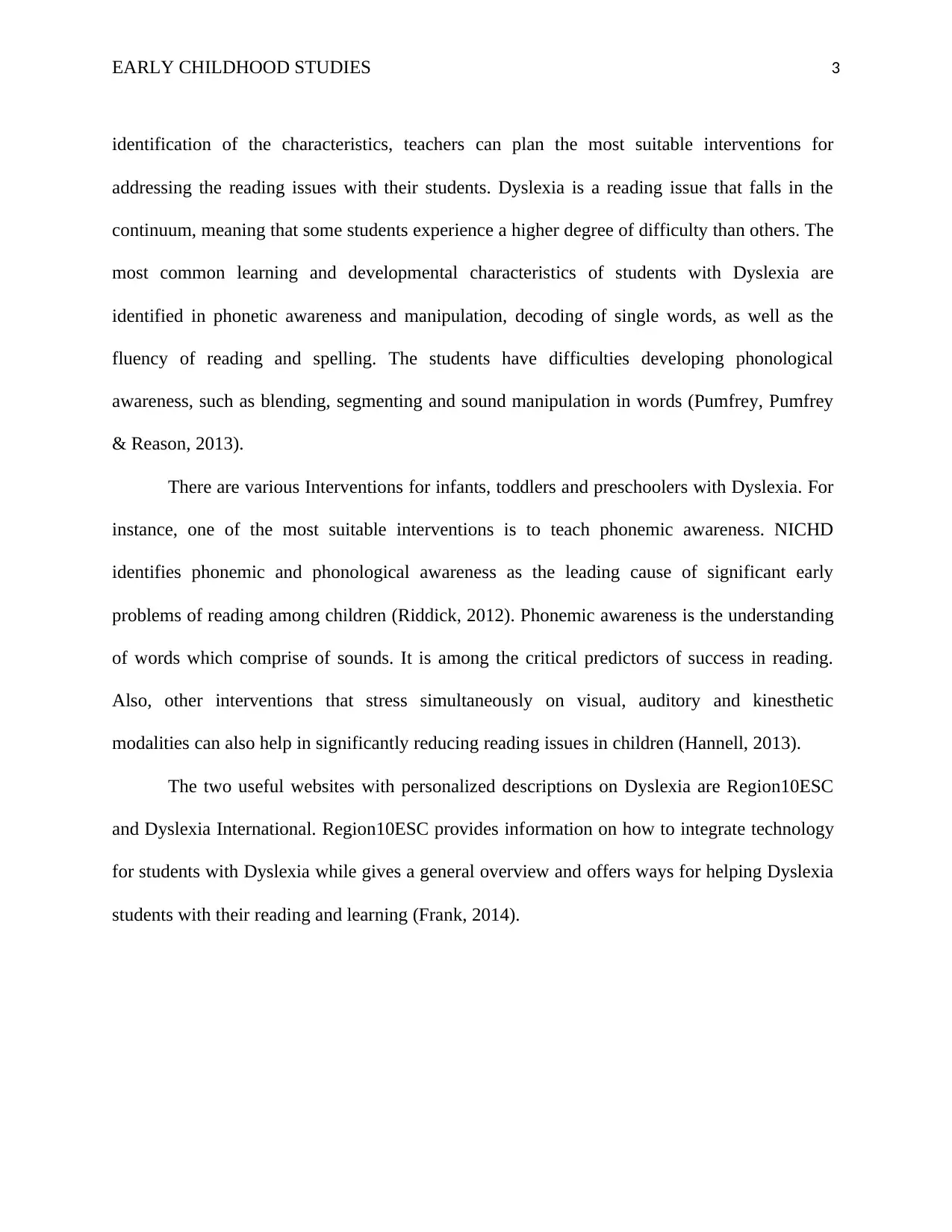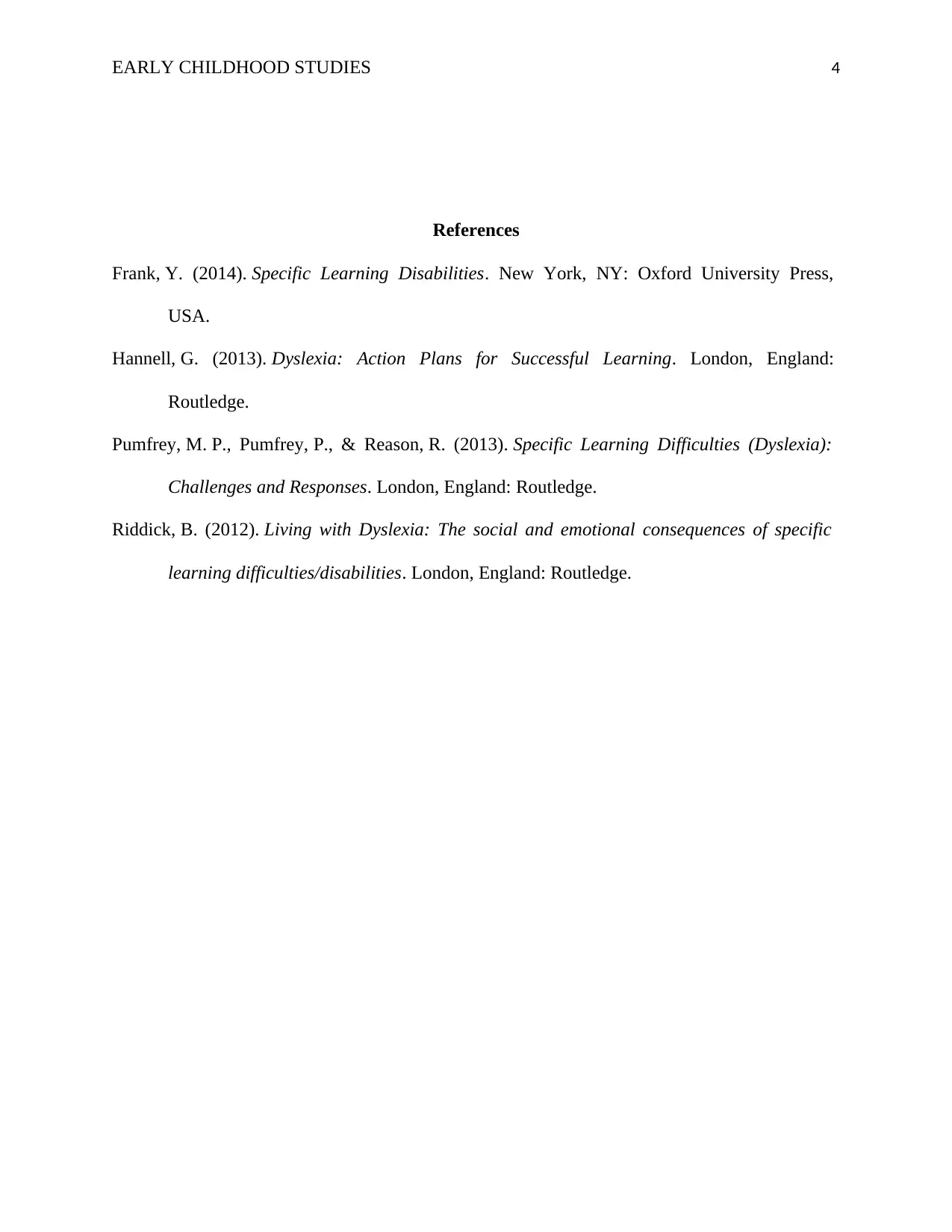Early Childhood Studies: Exploring Dyslexia and its Interventions
VerifiedAdded on 2023/04/25
|4
|726
|216
Report
AI Summary
This report, focusing on early childhood studies, addresses Dyslexia, a specific learning disability impacting reading, spelling, and comprehension. It defines Dyslexia, highlighting difficulties in processing graphic symbols rather than a visual impairment. The report explores potential causes including genetic factors and brain activity, while also outlining key learning characteristics such as challenges in phonemic awareness, decoding, and reading fluency. It then details interventions like teaching phonemic awareness and multi-sensory approaches. Additionally, the report includes references to helpful resources like Region10ESC and Dyslexia International, providing insights into technology integration and general support for students with Dyslexia. This comprehensive overview aims to aid in understanding and addressing Dyslexia in early childhood education.
1 out of 4











![[object Object]](/_next/static/media/star-bottom.7253800d.svg)